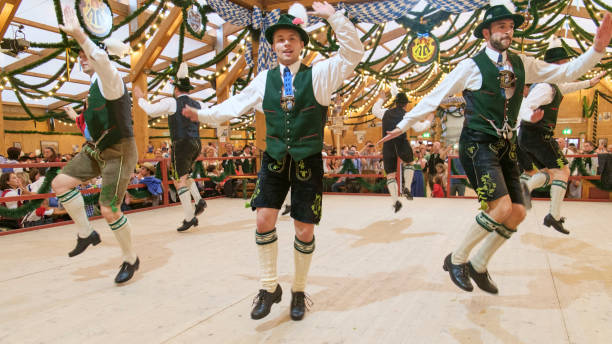If you want to know exciting facts about lederhosen, then you are on the right page. Having been worn in the Bavarian Alps and Austria for generations, lederhosen remain hard-wearing, strong articles of clothing. But now it’s an icon of traditional fashion. People love to wear it at Oktoberfest, at weddings, and some dinner parties. For the sake of longevity, it’s essential to pick one that’s well-fitting and, most importantly, one that you’re happy to wear. So, before you buy, do some research to avoid any inconvenience.
Ways to clean your lederhosen at home
Lederhosen doesn’t require much attention for its cleaning procedure: dust and filth may be easily brushed off with a simple brush. On the other hand, stains are more difficult to remove, and you’ll have to follow the manufacturer’s instructions for each sort of stain. The stains from sitting on the ground can be permitted to dry and then brushed off with a moist cloth on smooth leather and darker colors. You may use a leather brush to remove even stubborn greasy stains.
However, if the leather is lighter in color, you’ll have to be more careful. Take your lederhosen to a leather cleaning if you want to ensure that nothing goes wrong. If you can afford it, you may rest assured that your lederhosen will be restored to its former glory. Professional cleaning is a need if the lederhosen was pricey and of good quality.
Do you know which type of leather is the best fabric for the lederhosen?
All kinds of leathers can be used to make lederhosen. In terms of quality, buckskin Lederhosen are the best of the best and come in both smooth and suede finishes. Buckskin, which is made from deer hides, is simple to dye and always looks terrific, whether it is light, brown, or dark chocolate.
The darker the leather is, the less likely it is to reveal stains and marks; this is also true of lederhosen with a worn-in look. The patina from wear on lighter models is a good sign that they’ve been worn a lot! Besides buckskin, lederhosen is also made from split cowhide leather, wild boar hides, and goatskin. However, quality leather will always have a comfortable hand feel, regardless of the type of leather used.
The resurgence of the lederhosen outfit
In the wake of King Ludwig’s passion for the work pants of farmers, raftsmen, and Alpine herders, other royal houses rediscovered lederhosen. Prince Luitpold and other men of the Habsburg and Wittelsbach households suddenly appeared, all sporting leather shorts while hunting. When a trend takes root, it happens all of a sudden. Aside from the country’s intellectual elite, many summer visitors to lederhosen districts also donned the pants during the boom period. Lederhosen was no longer regarded as a fashion faux pas but rather as a symbol of class and refinement in the German community. Eldorado and gentian were used to decorate the suspenders; oak and vine leaves were used on the pants. Many of Ludwig II’s most famous sayings and portraits were embroidered on the saddle or the back of the breeches.
Read more: How to Make Your Lederhosen Stand Out this Eve
Lederhosen: How do I use the word correctly?
“Lederhosen” is German for “leather pants,” as you may have guessed. If you’re German, you should know that the word for “a pair of lederhosen” comes from the stem word die Lederhose, which means “the trouser” in German. If you mention “the Lederhosen” or “a couple of Lederhosen” in German, people will assume that you own two or more pairs!
Lederhosen rhymes with the words “wader” and “selected,” not “beamer,” in pronunciation. Krachlederne, which translates to “cracking leather” and refers to the sound of leather-clad thighs being smacked, is another Bavarian term you’ll hear.
Lederhosen are a one-of-a-kind garment
However, it’s not just the pattern that makes lederhosen so unique; it’s also the length that makes them so different. Even Ötzi, the world-famous ice mummy, wore long lederhosen in the beginning. There was less material to work with when britches were introduced in the 17th century. Thus sculpted men’s calves were on display. Mountain hunters and dairy farmers’ clothes were significantly shorter in order to provide more legroom. The cut of the boot lederhosen is distinct. They have ankle-tied pant legs with extra-narrow pant legs. And then some jeans have special effects built-in. The sole aim of ‘Plattler’ pants, which fall just below the knee, is to increase the volume of the ‘Schuhplatteln’ dance when smacked with the hand.
